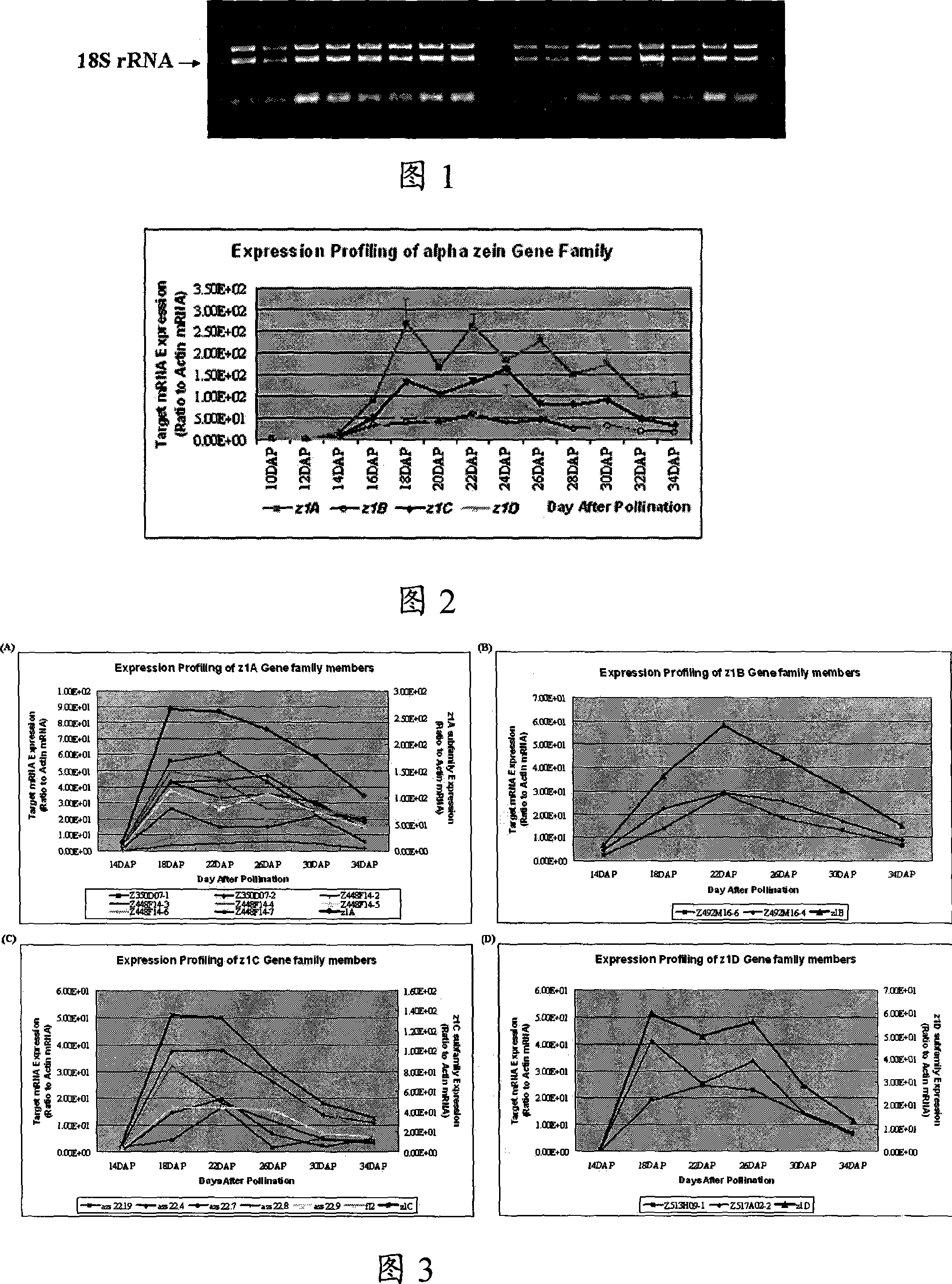Construction method of expression profile for high homologous degree polygene family
A technology of gene family and construction method, applied in the field of construction of expression profiles of multi-gene families, can solve the problems of boredom and duplication of northern blotting, difficulty in determining the expression of members, and difficulty in detecting expression genes.
- Summary
- Abstract
- Description
- Claims
- Application Information
AI Technical Summary
Problems solved by technology
Method used
Image
Examples
Embodiment 1
[0019] Example 1: Obtaining the expression status and relative abundance of each member gene of the α-gliadin multigene family 24 days after pollination
[0020] In order to obtain the expression profile of the α-gliadin supergene family in the whole process of grain development, the endosperm on the 24th day after pollination was collected (every two days), the total RNA was extracted (Trizol kit, Tiangen), and the total RNA was treated with denatured agar Glycogel electrophoresis and UV spectrophotometer analysis and quantification.
[0021] The sequences of all homologous genes in each family were compared, and primers were designed in the conserved regions, see Table 1, and the amplified fragments contained polymorphic comparison sites. Using this primer, the reverse transcription product of the total RNA of the corn endosperm at various developmental times was used as a template for PCR amplification, and the number of cycles used for the amplification was the optimal num...
Embodiment 2
[0027] Example 2: Obtaining the total expression of each gene family of the α-gliadin super gene family
[0028] The endosperm was harvested from 10 days to 34 days after pollination (every two days), and total RNA was extracted (Trizol kit, Tiangen). See Figure 1. Total RNA was analyzed and quantified by denaturing agarose gel electrophoresis and UV spectrophotometer. Using the endosperm total RNA of each sample point as a template, Oligo(dT) 16 used as primers for reverse transcription. Primers were designed for each gene family according to the expressed gene sequence, see Table 1, and real-time fluorescent quantitative PCR was performed using the reverse transcription product as a template. Actin was used as an internal reference gene. The data were collected and analyzed by the software Opticon3.1, and the expression profiles of the four families during the whole process of grain development were obtained, see Figure 2.
Embodiment 3
[0029] Example 3: Obtaining the expression profile of each member gene of the α-gliadin super gene family
[0030]Using the random clone sequencing described in Example 1, the relative expression abundance of each member gene of the four families in the maize endosperm (every four days) from day 14 to day 34 after pollination was analyzed. Combining the overall expression level of each family with the relative abundance of each member gene contained in it, the expression profile of each member gene in the whole process of grain development can be obtained, see Figure 3.
PUM
 Login to View More
Login to View More Abstract
Description
Claims
Application Information
 Login to View More
Login to View More - R&D
- Intellectual Property
- Life Sciences
- Materials
- Tech Scout
- Unparalleled Data Quality
- Higher Quality Content
- 60% Fewer Hallucinations
Browse by: Latest US Patents, China's latest patents, Technical Efficacy Thesaurus, Application Domain, Technology Topic, Popular Technical Reports.
© 2025 PatSnap. All rights reserved.Legal|Privacy policy|Modern Slavery Act Transparency Statement|Sitemap|About US| Contact US: help@patsnap.com

